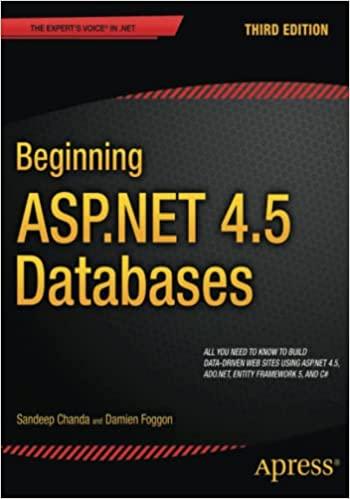Question
Employee Details Employee Salary Employee Dept. Title Qualifications Employee ID Employee ID DeptID TitleID QualID Personal ID SalaryID DeptDate EmployeeID EmployeeID FirstName Currency DeptName From
| Employee Details | Employee Salary | Employee Dept. | Title | Qualifications |
| Employee ID | Employee ID | DeptID | TitleID | QualID |
| Personal ID | SalaryID | DeptDate | EmployeeID | EmployeeID |
| FirstName | Currency | DeptName | From Date | Experience |
| Middle Name | Monthly Salary |
| ToDate |
|
| LastName | From date |
|
|
|
| To Date | To Date |
|
|
|
| Gender |
|
|
|
|
| Date ofBirth |
|
|
|
|
| Hire Date |
|
|
|
|
Once all objects have been created in the database, create SQL INSERT statements (DML) to populate each table with sample data. Then develop SQL SELECT statements to query your tables.
INSERT statements - each table should have a minimum of 10 rows unless you have specific business rules that prevent it from having that many records.
SELECT Statements - minimum 20 Queries.
Note: You should have a minimum of 20 SQL select statements. Query 1 to 12 (see below) are required, plus at least 8 advanced queries. Each query should have comment/description to explain its business purpose, as well as which requirement item you are satisfying (i.e., --1. Select all columns and all rows from one table). Please submit both query statements and query results.
Select all columns and all rows from one table.
Select 5 columns and all rows from one table.
Select all columns and all rows from one view.
Using a join on 2 tables, select all columns and all rows from the tables without the use of a Cartesian product.
Select and order data retrieved from one table.
Using a join on 3 tables, select 5 columns from the 3 tables. Use syntax that would limit the output to 10 rows.
Select distinct rows using joins on 3 tables.
Use GROUP BY & HAVING in a select statement using one or more tables.
Use IN clause to select data from one or more tables.
Select length of one column from one table (use LENGTH function).
Use the SQL DELETE statement to delete one record from one table. Add select statements to demonstrate the table contents before and after the DELETE statement. Make sure to use ROLLBACK afterwards so that the data will not be physically removed.
Use the SQL UPDATE statement to change some data. Add select statements to demonstrate the table contents before and after the UPDATE statement. You can either COMMIT or ROLLBACK afterwards.
Perform 8 additional advanced (multiple table joins, sub-queries, aggregate, etc.) SQL statements.
The deliverable would be two separate files: a consolidated source file in plain text (.txt or .sql file) including all your SQL statements (DDL to create your objects, INSERT statements to populate your tables, and your queries); and a consolidated, formatted Word document including all four parts of projects (SOW, requirements, ERD, your code as well as results of running your code).
The instructor and TA should be able to run your source file as script as-is (without adjustments) to generate the same output as shown in your second file. It should run error free. The script should have standard Oracle comments for each SQL reflecting its business purpose, as well as which requirement item you are satisfying (i.e., --1. Select all columns and all rows from one table).
Step by Step Solution
There are 3 Steps involved in it
Step: 1

Get Instant Access to Expert-Tailored Solutions
See step-by-step solutions with expert insights and AI powered tools for academic success
Step: 2

Step: 3

Ace Your Homework with AI
Get the answers you need in no time with our AI-driven, step-by-step assistance
Get Started


